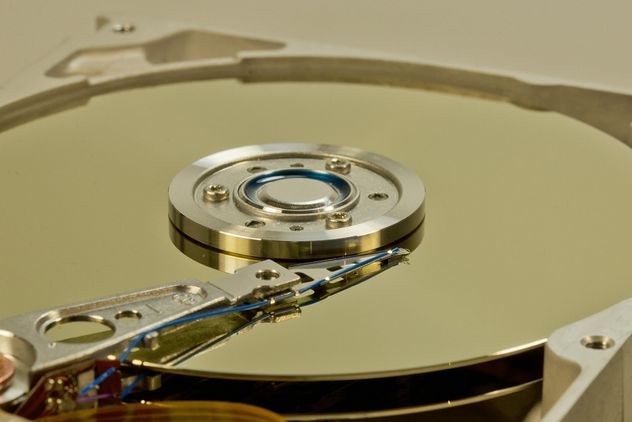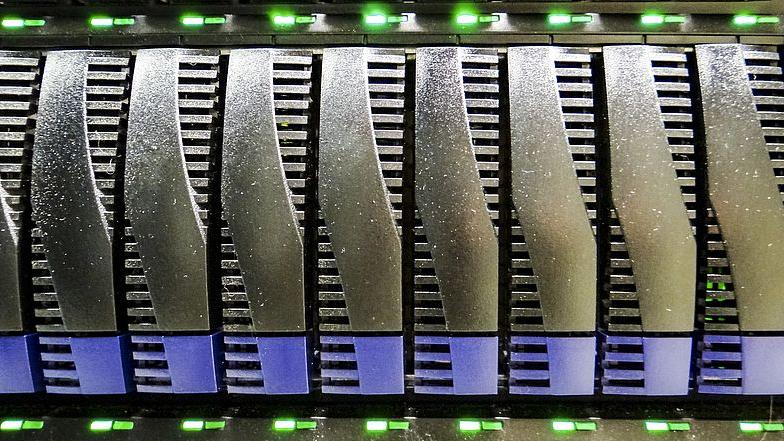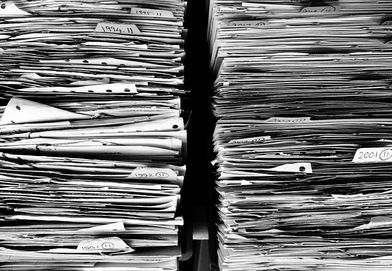In research and teaching, electronic data is produced and exchanged frequently and with ease. Often files are simply saved somewhere without a systematical plan. As a result, searching or identifying file versions may be unnecessarily time-consuming. With some simple strategies and a little discipline, however, organizing and securing your data becomes more effective.
Tips & Tricks for Managing Your Data
Hard Disks. Photo: Martin Liebetrutu. CC BY 4.0
1. Naming Files
Having a consistent system for naming your files has many advantages:
- Retrieving your files is easy.
- Files can be identified at first sight.
- The sorting algorithm of your computer works for you.
- No mixing up of file versions
- Duplicates are avoided.
- Superfluous files are quickly identifed.
- You understand your own data even long after your project has finished.
- Others can understand your data e.g. if you work collaboratively or if you have to pass on your data on occasions like a change of job.
Find a System for Naming Your Data
Take a moment and ask yourself what kind of information on your files allows you to identify them at first sight. This could be, for example:
Name of Author_year_title (e.g. for secondary literature)
Menon_2008_Unhistorical_Shakespeare.pdfDate_title_number (e.g. for empirical data)
20201203_stolen-generation_interview_01.docxTitle_text type_date (e.g. for the text of your thesis)
Heraldry-in-medieval-England_outline_20170728.docx
Heraldry-in-medieval-England_chapter1_20170728.docx
Consider the following rules for naming files:
- Use names or abbreviations which clearly describe the content of the files.
- The file names should be as concise as possible.
- Write dates according to the scheme JJJJMMTT.
- Absolutely avoid the characters “ / \ : * ? ‘ < > [ ] & $ = ; , |
- Avoid special characters and umlaute.
- Avoid blanks and instead use underscores.
2. Organizing Your Data
Organizing data means keeping your files on your computer following a clearly defined structure. Because you want to:
- keep track of your files
- retrieve files immediately
- understand your own data even long after your project has finished
- ensure that others can understand your data because you work collaboratively or you have to pass on data on occasions like a change of job.
Reflect Your Project
A suitable organizing system should reflect your project, so in order to design your own concept, ask yourself the following questions:
- What is the structure of my project?
- How will the (written) results of my work be structured?
- Which steps does my project involve?
- Which categories would therefore represent my project best?
Categories can include:
primary texts // secondary literature // the chapters of a thesis //
your own papers and publications // fieldwork data // bibliographies //
images // notes // feedback // abstracts and outlines // archive folders //
Note that reference managing programs, such as Citavi or Zotero, can support you in systematrically organizing your data. Dependending on their features, they can manage sources, secondary literature, your papers and publications, material in many different file formats as well as your notes for you.
Document Your System - and Stick to It!
Organizing data is more of a habit than an art: Do stick to your system unless it turns out to be impractical and demands alterations.
Document your system in a readme.txt file and keep it with your data to make sure that you will understand what you were doing and thinking at the time, even years later. You can document the content of the folders similarly to the outline of the categories above. Don't forget to include the subfolders!
3. Securing Your Data

The loss of your data is always painful and can severely impair your work. Therefore, make sure you have a good data management plan in order. Treat your data according to the high value it has for you.
The 3-2-1 Rule
To avoid the loss of your data, it is advisable to keep at least 3 copies of your data in 2 places on more than 1 type of storage:
- The original data is on your laptop at work.
- One backup is on a flash drive or an external hard drive disk that you keep at home.
- One backup resides on your institutions' cloud server.
This system is a reliable saftey net that accounts for most possible and impossible scenarios.
4. Re-Using Data
Once your research project is finished, don't discard your well-organized research data. There are several ways to archive and re-use your data. However, there are also several aspects you have to consider:
- Are there any legal or institutional requirements for archiving your data? Your research project or university might have policies on data archiving that prescribe what happens to your data after your project ends. If you have worked with informants (e.g. in the context of linguistic fieldwork), you might have ethical or legal obligations to archive your data.
- Even if there are no formal requirements, which of your data could be interesting for you at a later point? Think about the following scenarios:
- You want to build on your previous research in a later project
- You want to present your work in order to promote the publication
- You want to teach a course based on your research
- Even if you are sure that you never want to look at your data again, which of your data could be interesting for other people? Imagine the following cases:
- A student wants to further explore some open questions from your work
- A researcher from a related discipline wants to ask new questions of your data
- Historians want to reconstruct your working process (if you become famous)
Which of your data can be re-used?
Depending on the kind of data you have produced, you will face some choices when it comes to archiving and sharing your data.
- One million drafts vs. one final version. How important is it that people can reconstruct your data gathering process? Is there potential interest in seeing how the data developed over time, or is it mostly important to have access to the final version?
- "As is" or edited. If your data is not already anonymized, you might want to do so before publishing it. If your data is hard to understand without explanation, you might want to add further documentation to it. Also, make sure that your data is free from copyrighted material that you are not allowed to share (e.g. in the case of annotated corpora.)
How can you re-use your data?
If you decide that (some of) your data can be re-used, there are a number of ways you can make that possible. You could, for example, keep secure copies of your data yourself and share it on request.
However, to guarantee long-term accessibility, you might want to hand your data to programs that provide the necessary infrastructure for you. An institutional and topic-specific repository such as The Stacks, can host your data, share it with interested parties, and even raise its visibility. Find out more about The Stacks.
Further information on types of repositories and professional handling of research data is provided by our colleagues of the FID Romanistik in the section Arbeit mit Forschungsdaten (in German).
Researchers in the humanities and cultural studies can archive their research data in the DARIAH-repository or in the Humanities Data Centre.





